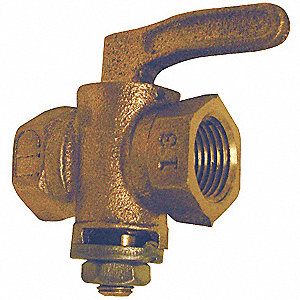Hi all,
Running PE line for an exterior fire pit. I'd like to put a shut-off valve on the line as it exits the meter to allow me to isolate it from the existing under-house gas system. There are many valve choices and I'm trying to understand the differences between them.
When I started this project, I just assumed I would use a full port lever handled ball valve, similar to what I've used on my water supply. They are often specified as 600 wog. I understand that the wog designation is for liquids and that there are other standards for natural gas. So I'm trying to find an appropriate valve for an exterior application.
Grainger carries these apollo gas cocks, - is this what I'm looking for? The Apollo valve catalog assumes the user has a good understanding of what valve to use when/where.

(Also - are these ball valves? If not, why aren't ball valves used?)
Thanks,
Murray
Running PE line for an exterior fire pit. I'd like to put a shut-off valve on the line as it exits the meter to allow me to isolate it from the existing under-house gas system. There are many valve choices and I'm trying to understand the differences between them.
When I started this project, I just assumed I would use a full port lever handled ball valve, similar to what I've used on my water supply. They are often specified as 600 wog. I understand that the wog designation is for liquids and that there are other standards for natural gas. So I'm trying to find an appropriate valve for an exterior application.
Grainger carries these apollo gas cocks, - is this what I'm looking for? The Apollo valve catalog assumes the user has a good understanding of what valve to use when/where.
(Also - are these ball valves? If not, why aren't ball valves used?)
Thanks,
Murray
